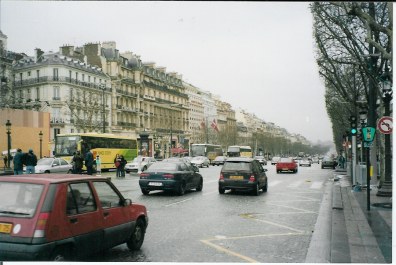 |
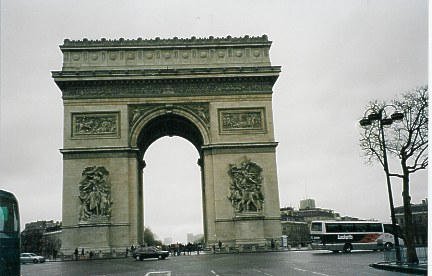 |
| The Champs Elysees, Paris's most famous
street where all the most fancy shops and
most prestigious places to live. The most
memorable were the prototype concept cars that
were displayed by European car makers - very
futuristic. |
The Arc de Triomphe, another site for which Paris is
known. It was built to celebrate
Napoleon's victories, though he never got to
use it. Around it is a traffic circle where
traffic goes around and around trying to exit
on one of the 12 major roads that converge
here. |
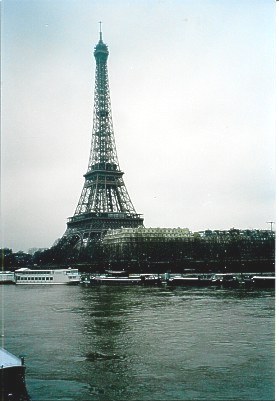 |
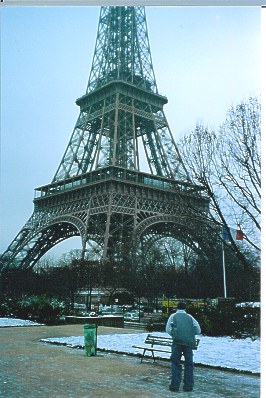 |
| The Eiffel tower was built for the 1889
world's fair to impress and is 1000 ft tall. Its
right on the river Seine that cuts Paris in two. |
The Eiffel tower is a mixture of a giant
impressive structure, huge up close, and
delicate construction in all the detailed
metalwork. |
 |
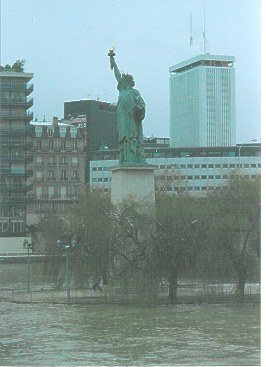 |
| One of those little smart cars, a hybrid car you
see in Europe where fuel conservation is
practiced. |
A smaller replica of the statute of Liberty is
near the Eiffel tower on the river Seine. Built
the same time as when ours was shipped over. |
 |
 |
| Wes and Kyler on a bridge near the Eiffel
Tower. |
Paris downtown along the river Seine. The
height of the buildings in central Paris was
regulated so all these old buildings are very
even. The Eiffel tower is seen in the distance. |
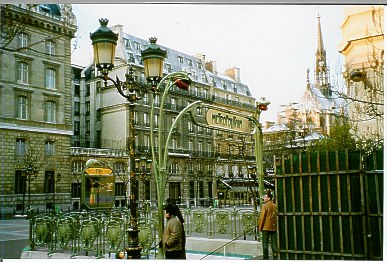 |
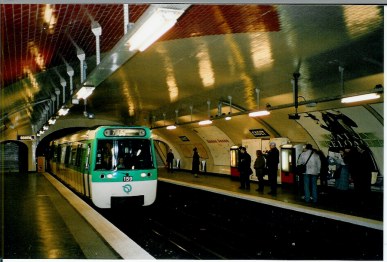 |
| Metro stations are found all over Paris. This
one was by our Hotel. |
The Metro, Paris' subway is a great way to get
around town. |
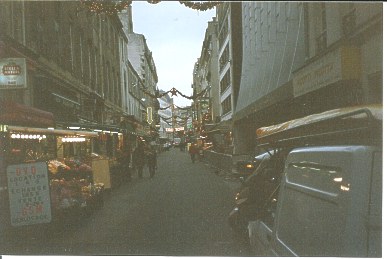 |
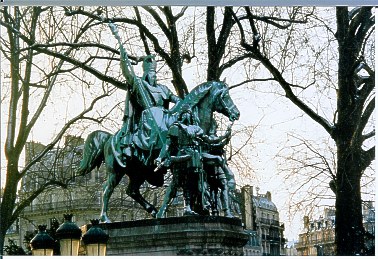 |
| The Rue Cadet near our Hotel. This side
street is where local Parisians get what they
need. It is filled with small shops for
necessities - a green grocer, meat shop, cheese
shop, bakery shop, pastry shop, and a couple of
small cafes. Paris is full of these small shops
instead of the huge impersonal everything
stores. |
Statue of Charlamagne. This conqueror
united Europe in the 800's during the Dark
Ages. |
 |
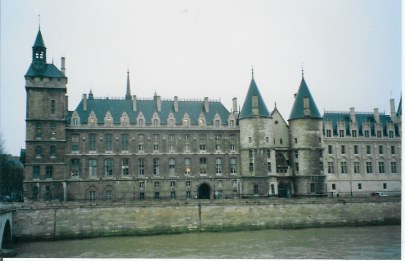
The Conceirgerie. This was the seat of power
in Paris long ago, but more recently was used as a
prison. and torture center during the
revolution. The twin round towers are parts
of a castle that existed in medieval days and
housed the early french kings. Nowadays its
home to France's Supreme Court. On the
side of the building is a Baroque clock from
1334 that is still working. |
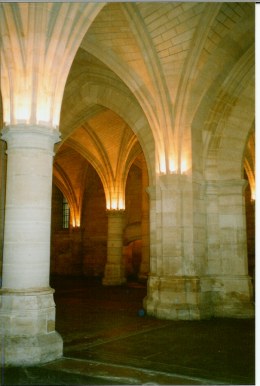 |
 |
| Gothic arches under the Conciergerie. |
Sainte Chapelle. This small church is an
impressive example of gothic architecture. It
was built in 1248 in only 5 years. Outside it's
mostly buttresses that open up the walls for
amazing stained glass windows. There are 15
windows with over 1,100 bible scenes. |
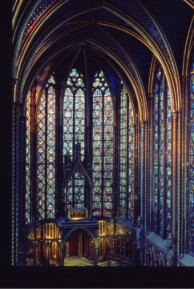
Interior of Sainte Chapelle, a experience in
light. Inside its like there are no walls, just
stained glass. To the right is detail of a
stained glass panel. |
 |
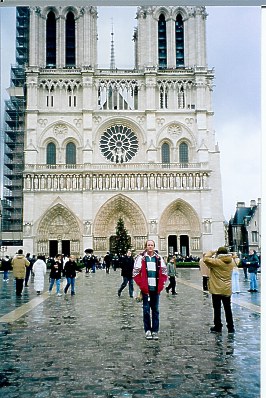 |
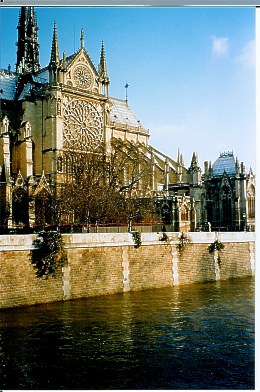 |
| Notre Dame Cathedral on the Ile de Cite. This
is on an island at the heart of Paris where the
city started before Roman times. Notre Dame
was started in 1163 and took 200 years to
complete. |
Flying buttresses on the sides add strength to
the walls and allow more open space inside and higher ceilings.
The Cathedral is in the shape of a cross with
the altar at the intersection of the cross. One
of the Rose stained glass windows is visible on the side. |
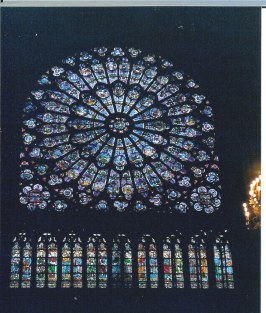 |
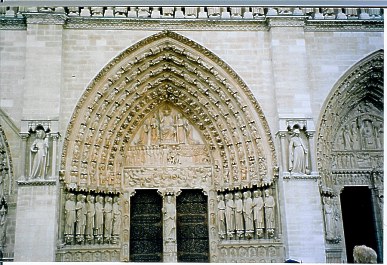
Detail of one of the main doorways to Notre
Dame. To the left is one of the Rose windows
of stained glass. This one is the only one with
its original medieval glass. It seams so high
inside as your eyes follow the arches up. The
cathedral can hold up to 10,000 people. |
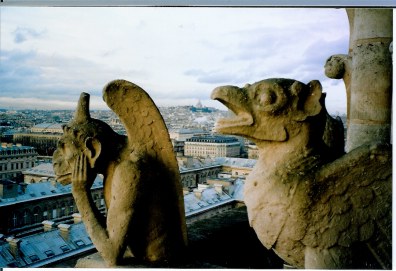 |
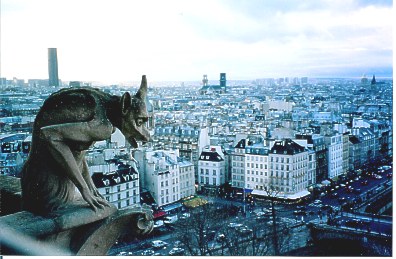 |
| Gargoyles on the roof of Notre dame. |
Great views of Paris from the towers of Notre
Dame. |
 |
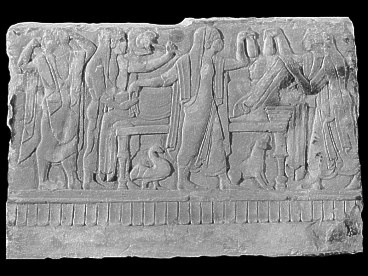 |
| The Louvre. Once a castle of french kings,
now one of the best art museums from ancient
times to the 1850's. The 30,00 works of art
are a full collection of western art. |
Some of the ancient art that once decorated
old buildings that was cut off by old french
nobles and brought back to France long ago. |
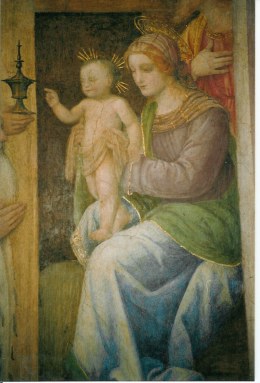 |
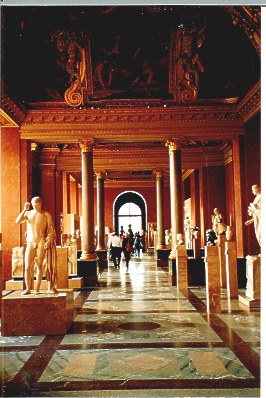 |
| Great works of art are on the walls that you
can get right up close. Most works are really
big. All the famous old masters have works
here. The Mona Lisa being so popular, can't
be appreciated since its behind glass and big
crowds rush you by fast, but all the other
works are easy to see well. |
Sculpture from Egyptian, Greek, Roman, Italian and
French artists fill rooms. The rooms
themselves are art with frescos on many
ceilings. This building was started as a
medieval fortress and added to by french kings
over centuries as a palace. |
 |
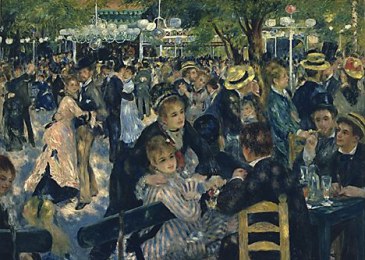
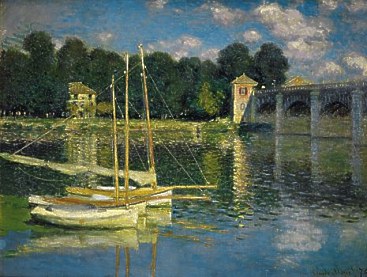
|
| The Musee d'Orsay picks up art where the
Louvre ends, namely the impressionistic
period. Its housed in an old train station. |
Works by Monet, Manet, Renoir, Gaughin,
vanGogh, Degas, Pizzarro, and Cezzanne are
found here, again just right on the wall. |
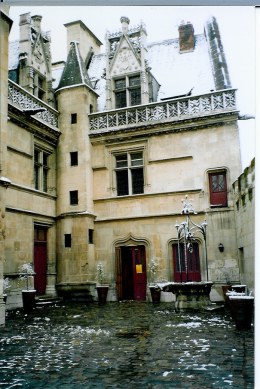 |
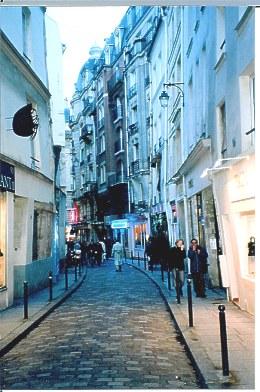 |
| Older building housing the Cluny museum of
medieval art. Mostly tapestries. |
Older parts of town where the narrow winding
streets have plenty of shops and cafes. |
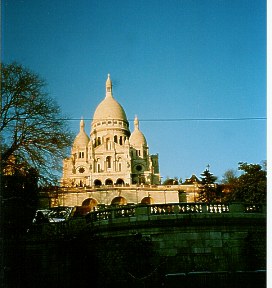 |
 |
| Sacre Coeur church on top of Montmartre hill
overlooking Paris. The roman byzantine
chruch with its onion domes and white color
is only a century old. |
One of the gargoyles which function as a rain
spout but have ice in its mouth instead of
water on this cold day. |
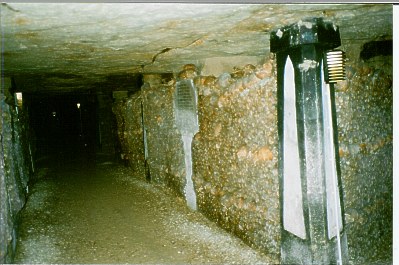 |
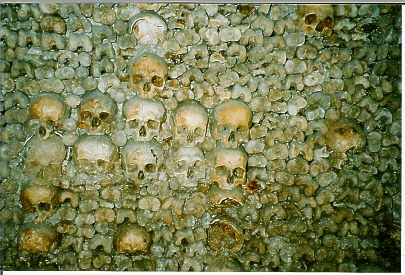 |
| The catacombs was one of the stranger places
to visit. As Paris expanded in the 1800's the
city dug up the old cemeteries to make more
room and put the bones in old limestone
quarries 80 feet deep. |
The bones aren't just a few, but go on and on,
6 million people are now buried here. They
are neatly arranged by cemetery location with
leg bones and sculls forming the outside wall
and the rest of bones behind. |




































